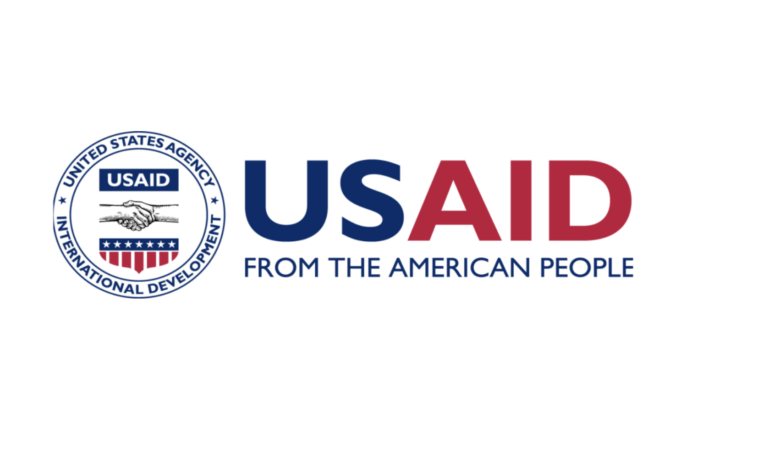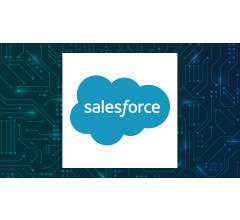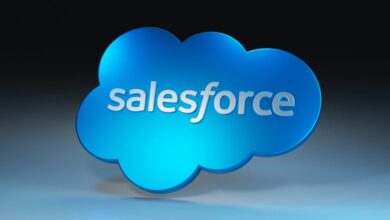Just do it! How USAID kicked off its first enterprise-wide CRM program to tackle a 25 year old global problem

The United States Agency for International Development (USAID) is an independent agency of the United States Government administers civilian foreign aid and development assistance. With a budget of over $50 billion, it’s one of the largest official aid agencies in the world, accounting for more than half of all US foreign assistance.
It’s a huge remit as Michael Metzler, Executive Director, Private Sector Engagement Hub at the agency explains:
Probably most people know us most when there’s an earthquake or tsunami and you see USAID on the ground, giving out food. We see it actually in Gaza now and Ukraine, but we do that all around the world. But actually, the bigger part of what we do is development assistance. We have programs in 100 countries around the world. We’re the world’s largest bi-lateral donor as a result of being part of the US Government. In every one of those countries we do all kinds of programming – education, health programming, democracy and governance, food security, hundreds of programs with thousands and thousands and thousands of activities in each of those. Every country looks different because we shape our we shape our programming to the country context. And then beyond that are tens of thousands of partners that we work with all around the world every day.
Managing those partnerships is a crucial activity, he adds:
We care about the private sector partners because these development problems, no matter what the country, no matter what the region, no matter what the problem set, they’re too big for USAID to do on its own, for the US Government to do on its own, or all the donors combined. We need partners to get the resources to rise up to the level of the challenges we face. Private sector is absolutely key to that.
Enterprise CRM
USAID has been a long time customer of Salesforce, whose CEO Marc Benioff has insisted for years that business ought to be a force for good. It’s a mantra that resonates within USAID, according to Metzler:
Our policy says that that if we’re going to try to solve these problems, it has to be with and through the private sector as partners.
Another shared value between USAID and Salesforce is around the importance of trust. Metzler explains:
We think there’s a lot of ways to think about trust. One way we think about it is, we have a deficit. We have a lot of information all around the world – every one of those programs, every one of those partners – but it’s all localized. So if you’re dealing with a partner, you know what you’re doing with that partner, you know what the program looks like, you have the data for that, but you’re not sharing it. And primarily you’re not sharing it because we don’t have the systems in place to share it. We have no enterprise-wide system to actually have insight into every single program with every single partner. That has been a big problem for us for a long period of time.
He goes on:
You trust your information with your partner, but you know it’s only a little piece of the pie of your engagement with that partner and there’s a lot more information out there about how we’re working with partners, what we’re doing with partners, what works best with that partner, what has failed in the past with that partner. You’re blind to all of that. So we’re trying to solve for that through our first enterprise-wide CRM system, but also the the human ecosystem around that, because at the end of the day, it’s the people that is going to make the system work, not the system going to make people work
It’s not just USAID that has this problem, of course; it’s mirrored across the US Government and probably every other government around the world. As Metzler observes:
For a long period of time a lot of people have been complaining about this problem, possibly myself included in that, but we’re now doing something about it.
Compass
That’s where the Compass initiative comes in, explains Metzler, the enterprise-wide CRM system that USAID has been building out for the past two years on the Salesforce platform. It’s a big project and one that required a leap of faith to get underway:
In government, you tend to talk yourself out of solving big problems because one, no-one solved them before you, or you just think the problem is too large and the bureaucracy is too deep to ever attack it. What we did is, my team and I we got together two years ago and we said, ‘You know what? We’ve been complaining about this issue for literally 25 years since we started doing private sector engagement – let’s do something about it!’
What the team did was scope out the problem and scope out the solution, then sent a 56 page document that laid it all out up the chain-of-command. Metzler recalls:
To the great credit of our Administrator, Samantha Power, she actually read all 56 pages of our document, marked it up, and then signed it and said, ‘Let’s do it. Let’s fix this problem at USAID’. And so that set us off on this journey with Steampunk, who’s our architect firm that’s helping us think this out, and frankly one of the best teams in all the government I’m convinced, both in our CIO shop, but also in our technical shop.
The journey to date has involved spending a lot of time with the customer base, which is both the private sector partners, but also internal constituents in the form of:
All those people across all those programs around the world who are blind to everything else we’re doing. We’ve been travelling around the world talking to them, using a real human-centred design approach to really understand what the need is and how people will use this across all those types of programs and, frankly, beyond private sector partners. We come at it from a private sector partner [point of view], but we have thousands of foundation partners, donor partners, NGO partners, and we see this system being used for all of that.
Doing it
Compass may yet have a wider impact outside of USAID’s initial ambitions, suggests Metzler:
If you think about technology [and] enterprise level solutions, which is what the CRM is, we too often think about solving my problem in my office in my program. What we’ve done is pull that back out at the enterprise level and [we’re] trying to show the value of what a real enterprise-level system looks like. If we get that right, we also want to see that taken [up] at a higher level which is across the whole US Government, because no matter what level of what operating unit you’re at, everybody’s still piping information. I think there’s a real move towards understanding and really appreciating enterprise-wide systems, really forcing that rather than just doing bespoke systems.
His advice to other public sector leaders is blunt:
Just do it! I mean, that’s what we did. We started talking ourselves out of doing it because we did the same thing everybody else did. ‘Well, it’s too expensive. The bureaucracy is too much. Well, we don’t know much about the technology itself. It’s too hard. It’s gonna take too long’. And then we just said, ‘You know what? We can send a memo up and so we just did it, and we got the response and that set us on our way. You’ve got to start somewhere. You’ve got to convince your leadership to support it. I think you’ll actually get a good result because the problem is so glaringly obvious. For us, it’s been around for such a long time that people want solutions. They just don’t want to hear what the problems are.
Find people in your organization that are suffering from the same problem and get them on board, he argues:
That memo that we sent out to our Administrator – five Assistant Administrators signed off on that, all with different needs for a CRM type system. They happily signed off on that. There are a lot of people out there that are suffering from the same issue or aligned issues and you’ve got to get them on board.
And get the tech people inside the tent as well, he adds:
We’re not technology, folks. We think about programming. We reached out and engaged with our CIO office, and it has been an absolutely fantastic engagement. I think it’s very unique. In our agency, typically, if you need a technology solution, you go tell your CIO shop to fix it…We’re equal partners in this and our CIO shop has been with us every step of the way, from the design, and they’ll be with us every step of implementation. We not only got a better product, we got a faster product…just break down those walls, reach out across agencies. From programs to operations, you’re all in it together.



